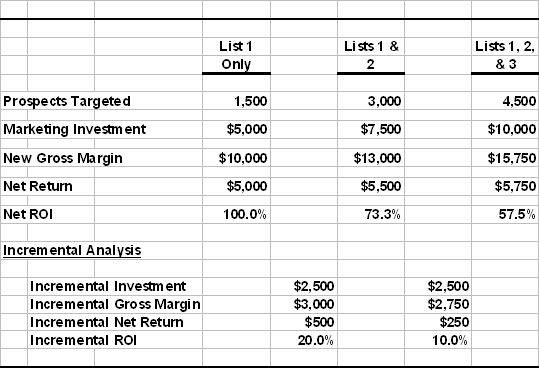
To compare a REIT’s leverage to its peers, focus on the debt-to-equity ratio and the debt ratio. Mortgage REITs, for example, buy and sell mortgages and mortgage-backed securities. This makes them more sensitive to interest rate changes than equity REITs. Depending on the type of mortgages they finance, default risk may also be a factor. That’s why the highest-yield REITs often show a downward price trend.
Carey intends to invest in new properties in 2021, which should help to fuel continued growth. Because of this, the REIT has a diverse location base and also covers warehouse, office, retail, and industrial sectors. Realty Income has given itself the title of “The Monthly Dividend Company” due to the fact that it’s paid out dividends for 615 months in a row and counting. Stock prices have increased throughout the year, with gains of nearly 70% from last year.

Knowing commercial real estate investing best practices can help ensure success. Meanwhile, that history of ground-up construction means there are often internal growth opportunities https://1investing.in/ even during tougher times. Unlike Realty Income, AvalonBay’s dividend hasn’t gone up every single year, but it has been on a steady upward march since 1995.
LTC Properties (LTC)
This is a dividend you can trust, too, given an extremely conservative payout ratio averaging 70% of FFO over the past five years. Healthcare REIT Healthpeak Properties (PEAK, $30.60) owns 633 properties, balanced across the life sciences, senior housing and medical office sectors. Medical office properties are located adjacent to hospitals and leased to hospitals or physician groups. While payout ratios are currently higher than the company’s historical targets because of COVID’s effects on FFO, the company kept its 47-cent-per-share dividend intact in November. More importantly, Realty Income is still trading at a discount from the pandemic.
The trust’s debt-to-equity ratio is elevated at 135% today, and the current run rate for interest expense is about $235 million annually. Those are significant numbers, which is surely why Omega opts to issue new common shares to raise capital. The growth of the Fed’s balance sheet has already begun to slow as Jay tries to taper his way out of the inflationary doghouse by slowing the pace of money printing. Going from $120 billion in new cash per month to (soon) zero will be bad for speculative assets, but bullish for reliable REIT dividends. This “flight to safety” will likely feature our favorite landlords.
These 10 REITs are all high-quality and trading at great valuations.
As a real estate investment trust, UDR, Inc. has developed a reputation for owning, acquiring, developing, and managing apartment complexes nationwide. Simply put, it is a multifamily REIT that generates cash flow by renting out entire complexes of apartments. In doing so, UDR has been able to maintain a dividend yield of 3.74%, which has kept investors very happy. The distinctive feature of real estate investment trusts is they pay out 90% of their income to shareholders in the form of dividends.
Affiliate marketing and niche websites can work hand in hand, offering a pathway to passive income. We have taken reasonable steps to ensure that any information provided by The Motley Fool Ltd, is accurate at the time of publishing. The content provided has not taken into account the particular circumstances of any specific individual or group of individuals and does not constitute personal advice or a personal recommendation. No content should be relied upon as constituting personal advice or a personal recommendation, when making your decisions. If you require any personal advice or recommendations, please speak to an independent qualified financial adviser. The company has around £364m in debt, which is high compared to an estimated £55m per year in rent.
It is a real estate investment trust (REIT), which primarily acquires and leases restaurant properties. MPW is special because its ever-rising dividend acts as a “magnet” that pulls its share price higher. The stock yields 4.9% today but that isn’t the end of MPW’s total return story. The REIT benefits from a migration of corporate tenants from cities such as New York, Los Angeles and Chicago to secondary markets where rents are lower and commutes are easier. National Health Investors (NHI, $65.54) invests in retirement communities, skilled nursing facilities, medical office buildings and specialty hospitals.
VICI Properties
REITs return value to shareholders in two ways—share price appreciation and dividend yield. You can easily invest in REITs through an online brokerage account, where you can buy and sell REITs just like stocks. REITs are required by law to pay 90% of their taxable income to shareholders, which means the dividends can be fairly substantial. If you need a brokerage account, read our roundup of the best brokers. REITs are companies that own and operate real estate — think shopping malls, apartment complexes and hotels. By purchasing shares of stock in a REIT, you can invest in real estate without owning properties.
W.P. Carey (WPC, $70.03) is a leading net-lease REIT that invests in high-quality, single-tenant properties. Net-lease REITs reduce risk by passing property-specific expenses (usually maintenance, how to become a quant trader insurance and taxes) directly along to the tenant and embedding contractual rent increases in leases. The best REITs have a solid history of dividend payments and dividend increases.
Best-Performing REITS: How to Invest in Real Estate Investment Trusts
This REIT also holds industrial properties, and provides investors will relatively stable dividends. The value per share has been increasing over the last several years, leading this REIT to have one of the highest payout ratios in this list. Office buildings, malls, apartment complexes, hotels, self-storage facilities, and warehouses have all found themselves in the portfolios of today’s REITs.
The 3 Best REITs to Buy Now: September 2023 – Nasdaq
The 3 Best REITs to Buy Now: September 2023.
Posted: Sun, 10 Sep 2023 13:23:00 GMT [source]
Mortgage REIT Invesco Mortgage Capital (IVR) is an interesting case study on the yield-reliability trade-off. But the REIT has struggled recently under the pressures of rising interest rates, falling property values and cautious financial markets. Dividends from U.S. companies and eligible foreign companies are usually taxed at the lower capital gains rates. So while you can earn higher yields with REITs, taxes will consume some of the difference. You can avoid that problem temporarily by holding REITs in tax-advantaged accounts such as traditional IRA, Roth IRA, 401 (k) and more.
Omega reported second-quarter earnings on August 2nd, 2021 and results were much better than expected, with records for both the top and bottom lines. Funds from operations (FFO) per share was 85 cents, besting estimates by two cents. The REIT rents to high credit-quality tenants such as the federal government, Bank of America (BAC), Bridgestone Americas (BRDCY) and MetLife (MET). UMH Properties (UMH, $14.41) is a manufactured-housing REIT that owns and operates 124 manufactured-home communities together representing 23,400 developed homesites. Its housing communities are located in New Jersey, New York, Ohio, Pennsylvania, Tennessee, Indiana, Maryland and Michigan.
- Alexandria Real Estate (ARE) is a life science REIT specializing in science, agricultural technology and technology office space located in key innovation centers across the country.
- Investors probably shouldn’t expect Realty Income to hit such a high figure every quarter.
- Understanding the key characteristics of passive income is crucial for aspiring entrepreneurs looking to establish sustainable income streams.
- The growth of the Fed’s balance sheet has already begun to slow as Jay tries to taper his way out of the inflationary doghouse by slowing the pace of money printing.
As real estate investment trusts, businesses will lease their properties to subsequent renters. Tenants may be anyone from a family renting an apartment or a department store leasing mall space. However, it has demonstrated it plans to at least maintain its current dividend, which is already providing attractive income to investors. Healthpeak Properties, Inc. is a REIT that invests in real estate assets related to the healthcare industry. Properties included in the Healthpeak portfolio include, but are not limited to, long-term care facilities and acute care and medical office buildings.
Income Tax Calculator: Estimate Your Taxes
Ventas has been a dividend workhorse over its life, growing its payout at an 8% annual compound rate since 2001. For reliable retirement income to last you through your golden years, Ventas is an attractive option. Crowdfunding real estate investing platforms like the DiversyFund, Fundrise and Realty Mogul offer another way to invest in public unlisted REITs. These platforms generally require investors to commit to real estate investments for longer periods of time, however. Thanks to its financial strength, the REIT can endure the ongoing crisis and emerge stronger whenever the pandemic subsides. It can also maintain its attractive 5.3% dividend, which is well covered with a payout ratio of 56%.
In addition, FCPT has a healthy interest coverage ratio of 3.6 and a debt to equity ratio of 1.0. Overall, we view its 4.7% dividend as safe in the absence of a severe unexpected downturn. While many REITs have been struggling and have cut their dividends during the coronavirus crisis, FCPT grew its revenues and its FFO per share by 7% and 4%, respectively, last year. If you’re as nervous about the 2022 edition of the stock market as I am, we should take this holiday week to review reliable REIT dividends. Morgan Stanley analyst Vikram Malhotra (Overweight, equivalent of Buy) likes the REIT’s 95% Sun Belt exposure, mostly pre-leased development pipeline and well-covered dividend. Wells Fargo analyst Brendan Finn reiterated his Overweight rating on the stock in late September, too.
There are also some very large REITs that use the net lease approach, like Realty Income. For reference, net leases require tenants to pay for most property-level operating expenses. However, the company’s direct competitors (those with sale/leaseback acumen and notable exposure to retail properties) just don’t come close. Growth can be a challenge for REITs, as being required to pay out their income prevents them from reinvesting.
